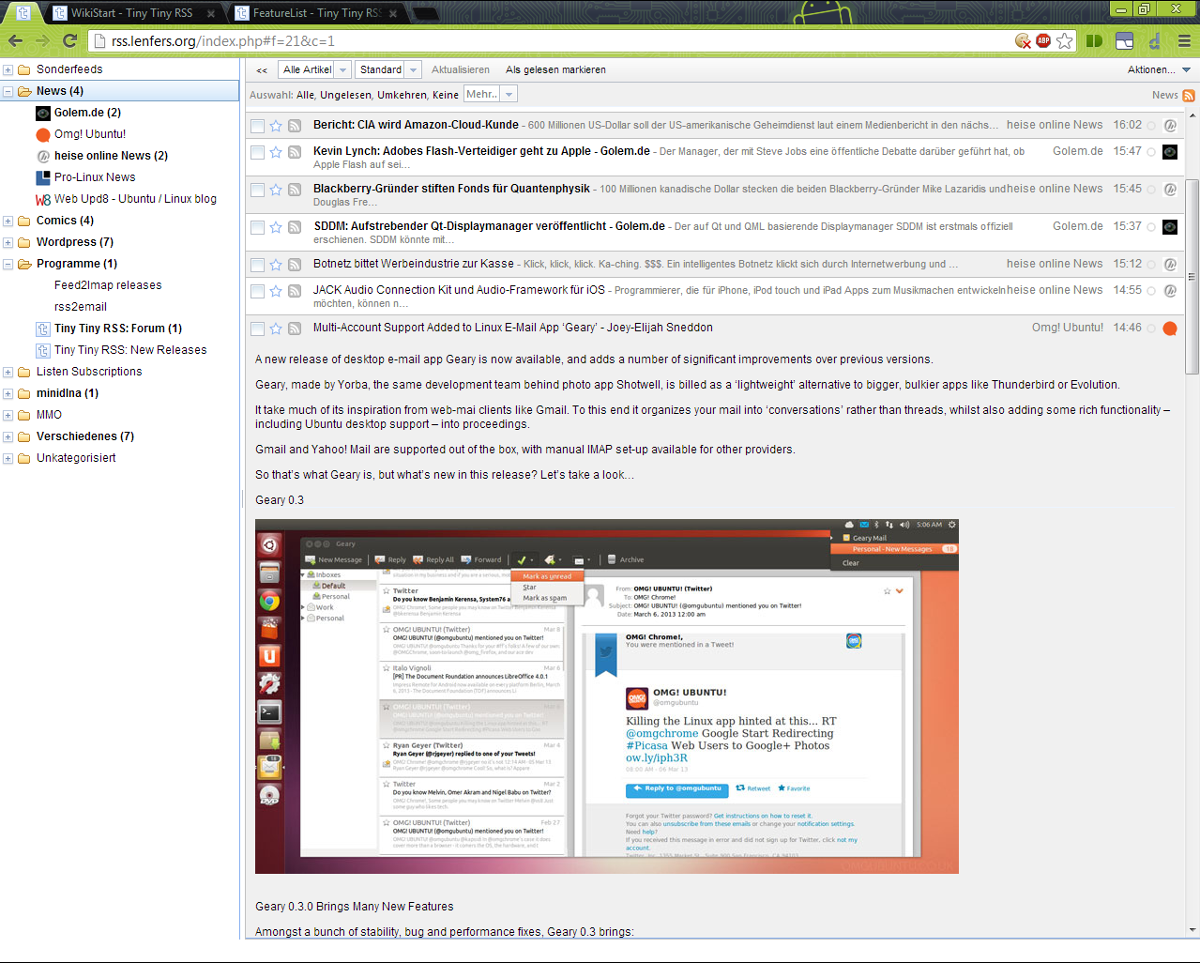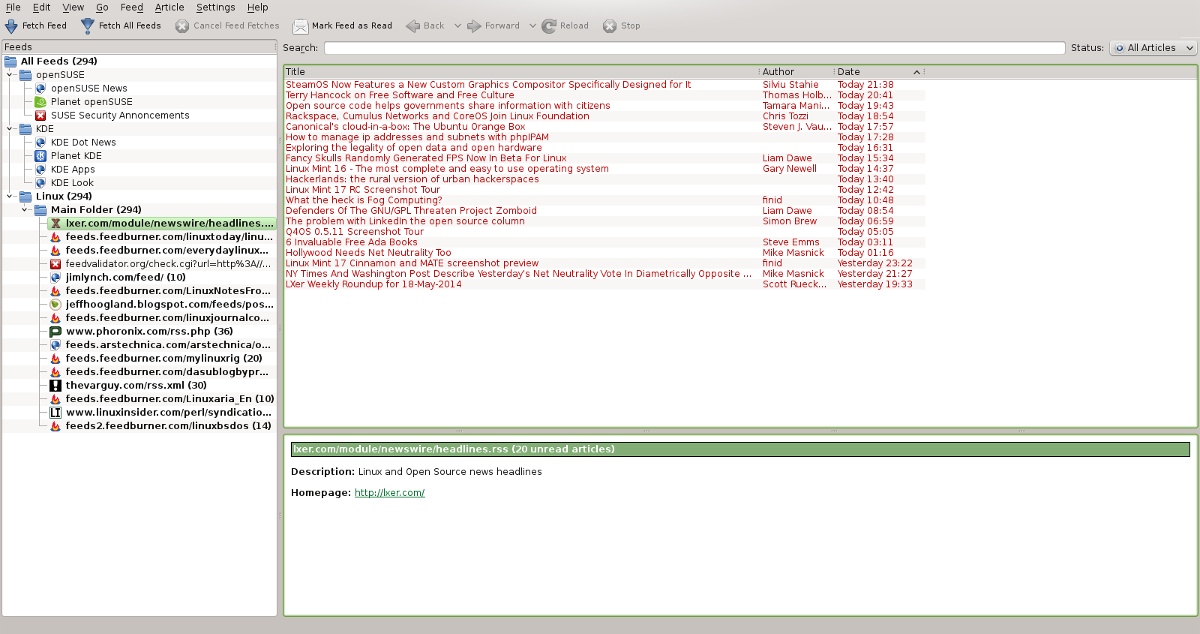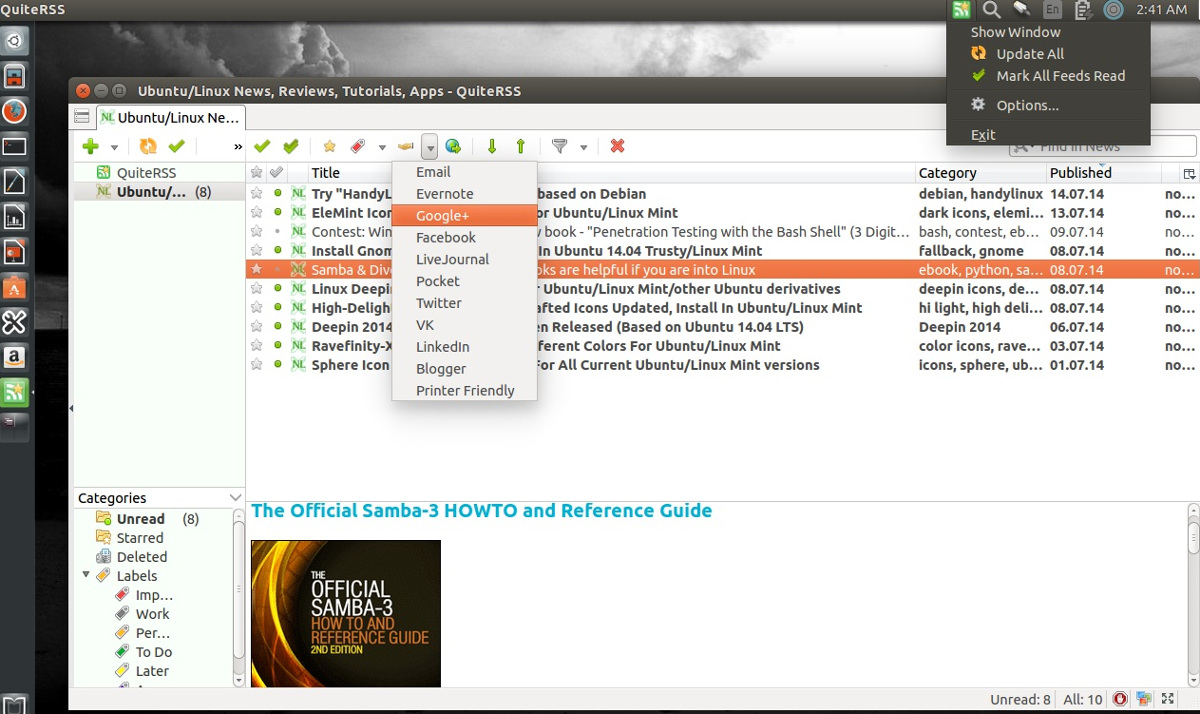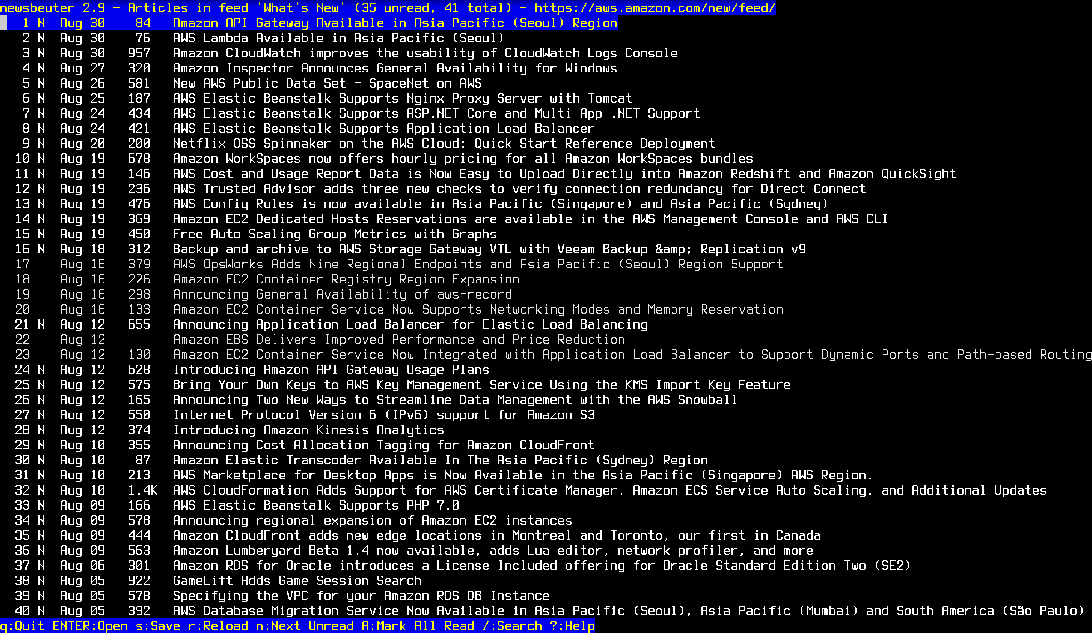4 Best RSS Feed Reader Apps For Linux
RSS is an aging technology, and because of this, nearly every website still uses it. Most tech journalists who actively say that “RSS” is dead, would be surprised to find out that many people (of all ages) still rely on this technology daily to get everything from breaking news, to podcasts, and etc. Really Simple Syndication isn’t new and there are many, many different RSS feed reader apps on Linux. Trouble is, since there are so many to choose from and Google Reader is long dead, many users new to Linux may not know which ones are good, and which ones aren’t worth downloading. It is because of this, we’ve created a list of the best RSS feed reader apps for Linux.
1. Tiny Tiny RSS

A lot of news reading tends to be “cloud based” these days. Rather than turning to one individual place for information, users like to have a platform they can access from multiple devices for a consistent experience. If you’re looking to accomplish something like this on Linux with RSS, Tiny Tiny RSS is a great choice.
Unlike a lot of other RSS tools on Linux, it’s not a standalone program on the desktop. Instead, it’s an application that can run on a home server where users can then remotely access an account, and read RSS feed items.
TTRSS takes the benefits of a local applications, and combines it with the convenience of “cloud computing”. Features include: feed aggregation, feed syndication, plugin support, theme support, podcast support, a powerful article filtering feature, support for multiple accounts, and more.
Fact is, gathering RSS subscriptions can be time consuming, waiting for articles and pages to download. If you’re tired of waiting for your subscriptions to download in your local RSS app, consider passing all the work off to a server application, that runs in the background. This will ensure that feed items are always up to date, no matter where you log in.
All and all, TTRSS is a versatile RSS delivery system that works well on Linux and other devices. It moves the hard work away from the desktop, and places it on the server for ultimate convenience and less wait times. Consider installing Tiny Tiny RSS on your home server today.
2. Akregator

Akregator is the official RSS feed reader for the KDE Plasma desktop environment. With it, users can easily subscribe to both RSS and Atom feeds on websites, and receive automatic updates. In addition, the feed reader uses KDE’s own Konqueror web browser so that all links, and stories stay within the app. This makes reading easier, as you won’t be switching between different applications.
This program has a lot of features that users would expect in an RSS reader, like: automatic feed refreshing, article categories, system notifications, and etc. If you’re looking for a solid RSS feed reader that will easily integrate into the KDE Plasma desktop, do install Akregator.
3. QuiteRSS

Looking for a good RSS feed reader you can use anywhere? Check out QuiteRSS. It’s a cross-platform, open source RSS feed reader that is available on Linux, Mac OS, Windows and BSD. The program is distributed and licensed under the GNU General Public License V3.
Features include: the ability to mark news stories “starred” (to save for later), automatic feed updating on a schedule, content blocking features, a built in webkit browser, to make viewing links easier, the ability to hide the app to the system tray, and more.
The main purpose behind QuiteRSS is to make an open feed reader that is easy to use. The categories are easy to manage, and overall the interface is easy to navigate, making a great choice for beginner Linux users looking to keep up with their favorite RSS feeds. Learn more about the app here.
4. Newsbeuter

RSS in the terminal sounds wild, but it’s possible with Newsbeauter. With it, users can easily subscribe to RSS and Atom feeds, sort and search subscriptions fast with a “flexible” tagging system, and even automatically delete subscriptions through a feature called “killfile”. In addition to these features, Newsbeauter (like all RSS feed readers) has excellent podcast download support.
Everything in the program is configured with a single configuration file, making it very easy to transfer RSS subscriptions. The developers promise that the configuration settings are very versatile, and are easy to modify. This makes it very easy to transfer settings from computer to computer.
Though Newsbeauter is in the terminal, this doesn’t take away from the reading experience at all. Best of all: since it can run via console, Linux system administrators who regularly work exclusively in terminals, can still keep up with their RSS subscriptions.
Conclusion
Though many tech journalists claim that RSS is dead, people keep using it. Why? It still remains one of the best, and easiest ways to keep tabs on websites across the internet. For all of the promise of social media, they still haven’t managed to deliver a central way to distribute and syndicate content like RSS can.
